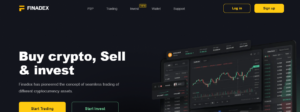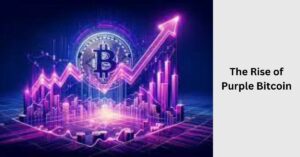Demystifying NFTs: A Beginner’s Guide to Non-Fungible Tokens

In the ever-evolving landscape of digital assets, Non-Fungible Tokens (NFTs) have emerged as a revolutionary concept, captivating the world of art, collectibles, and beyond. For beginners seeking to demystify NFTs, here’s a comprehensive guide to understanding this innovative blockchain technology.
Table of Contents
1. What Are NFTs?
NFTs, or Non-Fungible Tokens, are unique digital assets that exist on blockchain networks. Unlike cryptocurrencies such as Bitcoin or Ethereum, which are fungible and can be exchanged on a one-to-one basis, NFTs are distinct and irreplaceable. Each NFT holds unique metadata, making it one-of-a-kind and easily verifiable.
2. The Power of Blockchain: Security and Transparency
NFTs operate on blockchain technology, a decentralized and secure digital ledger. Blockchain ensures the authenticity and provenance of each NFT, providing a transparent record of ownership and transaction history. This decentralized nature minimizes the risk of fraud and establishes trust within the digital ecosystem.
3. Digital Ownership and Scarcity
NFTs enable true ownership of digital assets. When you purchase an NFT, you gain ownership and control over a specific digital file, whether it’s digital art, music, or virtual real estate. Additionally, many NFTs are designed with scarcity in mind, creating a sense of exclusivity and value akin to traditional art or collectibles.
4. Creating and Minting NFTs
To enter the world of NFTs, artists and creators can mint their digital creations. Minting involves creating a unique token on a blockchain, often through specialized platforms like OpenSea or Rarible. This process establishes a verifiable connection between the digital file and its NFT, making it ready for sale or auction on various NFT marketplaces.
5. NFT Marketplaces: Platforms for Buying and Selling
NFT marketplaces serve as the digital galleries where buyers and sellers converge. Platforms like OpenSea, Rarible, and Mintable facilitate the buying, selling, and trading of NFTs. Artists showcase their creations, and collectors explore a diverse range of digital assets, fostering a vibrant and decentralized marketplace.
6. Smart Contracts and Royalties
Smart contracts embedded in NFTs automate various processes, including royalty payments. Creators can set a percentage of future sales to be automatically directed back to them whenever the NFT changes hands. This feature ensures that artists continue to benefit from the appreciation of their work in the secondary market.
7. Environmental Considerations
The energy consumption associated with blockchain networks, especially Ethereum, has raised environmental concerns. Many blockchain projects are exploring eco-friendly solutions, such as transitioning to proof-of-stake consensus mechanisms. Buyers and creators may also consider platforms that prioritize sustainability in their blockchain infrastructure.
8. Risks and Challenges
While NFTs present exciting opportunities, it’s essential to be aware of potential risks and challenges. These include copyright issues, market volatility, and the need for due diligence when navigating the decentralized landscape. Beginners should approach NFTs with a well-informed and cautious mindset.
Embracing the NFT Revolution
In conclusion, NFTs have redefined ownership and value in the digital realm, opening new avenues for creators and collectors alike. By understanding the basics of NFTs, exploring marketplaces, and considering the broader implications, beginners can navigate this transformative landscape with confidence. Welcome to the digital art revolution – where uniqueness meets blockchain technology, creating a paradigm shift in the way we perceive and value digital assets.

